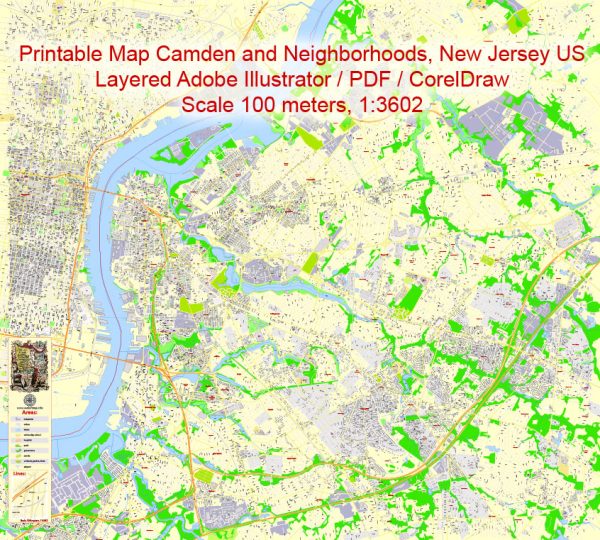Camden, New Jersey, has a rich and complex history of urban development that reflects the broader trends and challenges faced by many American cities. Here’s a brief overview of Camden’s urban development history:
- Early Settlement and Industrialization: Camden was originally settled by European colonists in the late 17th century. By the 19th century, the city experienced significant industrial growth, particularly in shipbuilding, manufacturing, and transportation. The completion of the Camden and Amboy Railroad in the 1830s solidified Camden’s role as an industrial hub.
- Economic Prosperity: In the late 19th and early 20th centuries, Camden was a thriving industrial city. Companies like Campbell Soup, RCA Victor, and the New York Shipbuilding Corporation were major employers in the area, contributing to the city’s economic prosperity.
- Urban Expansion: As industrialization and population growth continued, Camden expanded its urban infrastructure. The city’s architecture reflects this era, with numerous historic buildings and neighborhoods that highlight the city’s growth and prosperity.
- Decline and Deindustrialization: Like many American cities, Camden faced challenges in the mid-20th century. Deindustrialization and suburbanization led to a decline in manufacturing jobs, population loss, and a struggling local economy. The city’s tax base eroded, and its infrastructure deteriorated.
- Social and Economic Challenges: Camden also grappled with social issues, including poverty, crime, and educational disparities. These challenges were exacerbated by the decline of the local economy.
- Waterfront Redevelopment: In an effort to revitalize the city, Camden invested in waterfront development projects, including the construction of entertainment venues such as the BB&T Pavilion and the Adventure Aquarium. These developments sought to attract visitors and stimulate the local economy.
- Economic Revival Efforts: Camden’s economic revival has been aided by public and private partnerships. The establishment of tax incentives, the relocation of businesses to the city, and the construction of corporate offices have helped create jobs and economic opportunities.
- Ongoing Challenges: Despite efforts to revitalize the city, Camden still faces a range of challenges, including persistent poverty, crime, and educational issues. The struggle for social and economic equity remains a significant concern.
Camden’s history of urban development reflects the broader narrative of many American cities: a rise in industrialization and prosperity, followed by deindustrialization, population decline, and economic challenges. Efforts to revitalize the city have been ongoing, with a focus on attracting businesses, improving education, and addressing social issues. Camden’s future urban development will likely depend on continued efforts to address these challenges and create a more equitable and prosperous city for its residents.


 Author: Kirill Shrayber, Ph.D.
Author: Kirill Shrayber, Ph.D.